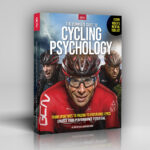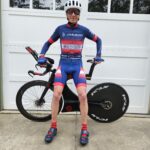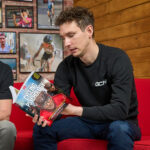Now that you have an understanding of Prime Cycling—riding at a consistently high level under the most challenging conditions—from my previous Prime Cycling articles, you can begin the process of achieving it. The first step involves gaining a better understanding of yourself as an cyclist. This self-understanding then results in greater improvement and better performance.
Becoming the best cyclist you can is complicated. You probably have a busy life filled with sports, school, work, family, social life, and other activities. It’s difficult to find the time to do everything. By understanding yourself, you’ll know what you need to work on to be efficient and focused in your efforts.
In developing greater self-understanding, you must recognize your strengths and weaknesses. Most cyclists love to focus on their strengths, but don’t like to admit that they have weaknesses. This attitude will limit how good a cyclist you can be. Most cyclists think that they’re as good as their greatest strengths. For example, a rider believes that his power output will enable him to win sprints. The truth is, however, that you are only as good as your biggest weakness. Returning to the above example, the rider’s biggest weaknesses are tactical inexperience and a lack of quickness. His or her explosiveness can be neutralized with better anticipation and a quicker reaction from other sprinters in the field, thus the rider’s power won’t necessarily determine the outcome of a sprint finish.
Think of cycling strengths and weaknesses as a mathematical equation. On a scale of 1-10 where a 1 is very poor and 10 is the best, if you have good power (8), but are tactically inexperienced (2), your over-all cycling performance would be moderate (8+2=10). If you focused on and improved your power even further (from 8 to 9), you wouldn’t improve that much over all because you already have good power, so there isn’t much room for improvement (9+2=11). But if you improved your tactical skills (from 2 to 7), then your overall cycling performance would rise significantly (8+7=15). Of course, you want to continue to build your strengths, but the more you improve your weaknesses, the higher your over-all performances and the more successful you will be.
Why Prime Cycling Profiling?
A difficulty with dealing with the mental aspects of cycling is that they’re not tangible or easily measured. If you want to learn what are your physical strengths and weaknesses on the bike, you can have your wattage or VO2 Max tested that gives you objective data about your physical condition. There is unfortunately, no way to measure your mental “muscles” directly. Think of Prime Cycling profiling as physical testing for the mind. It makes mental issues related to cycling more concrete.
It’s important for you to have an open mind with Prime Cycling profiling. Rather than being uncomfortable with facing your weaknesses, you should be willing to embrace the information in a positive and constructive way as essential for becoming a better cyclist. When weaknesses are identified, it doesn’t mean that you’re incapable of riding well. It may be that you haven’t had to use these skills at your current level or you’ve been able to hide them with the strengths you have. But the information you gain from Prime Cycling profiling will enable you to improve and you’ll have a better chance of achieving your goals.
Complete the Prime Cycling Profile
The Prime Cycling profile is comprised of 12 mental, emotional, and competitive factors that impact cycling performance. To complete the Prime Cycling profile, read the description of each factor and rate yourself on a 1-10 scale, then follow the instructions for evaluating your score and developing an action plan to build your strengths and alleviate your weaknesses.
Motivation – How determined you are to train and compete to achieve your cycling goals. (1-not at all; 10-very)
Confidence – How strongly you believe in your ability to achieve your cycling goals. (1-not at all confident; 10-totally confident)
Intensity – Whether your physical intensity helps or hurts your cycling performances. (1-hurts, too anxious or too relaxed; 10-helps, just right)
Focus – How well you’re able to stay focused on riding your best and avoid distractions. (1-distracted; 10-focused)
Emotions – Whether you have control over your emotions and they help you ride well or you lose control of your emotions and they hurt your riding performances. (1-lose control, hurt; 10-have control, help)
Consistency – How well you’re able to consistently maintain a high level of riding during training and races. (1-not at all inconsistent; 10-very consistent)
Routines – How much you use routines in your preparations including in training and before and during races. (1-never; 10-often)
Competitor – How you ride in races as compared to training. (1-much worse; 10-much better)
Adversity – How you respond to difficult conditions, such as bad weather or rough roads, you’re faced with during training and races. (1-poorly; 10-well)
Pressure – How you ride in difficult race situations, such as when you’ve dropped. (1-poorly; 10-well)
Ally – Whether you are your best ally or your worst enemy during a races. (1-enemy; 10-ally)
Prime Cycling – How often you achieve and maintain your highest level of cycling performance. (1-never; 1- often)
How to Use Your Prime Cycling Profile
Having completed the Prime Cycling profile, you now have a clear picture of what you believe to be your mental strengths and weaknesses in cycling. Typically, a score below a 8 indicates an area on which you need to work. Place a ü next to each factor that you scored as less than a 8. These are the factors that you’ll want to consider working on in your Prime Cycling program.
From those checked factors, select three to focus on in the immediate future. It doesn’t make sense to deal with every one that you need to strengthen. You’ll just become overloaded and won’t give adequate attention to any of them. It’s best to focus on a few, strengthen them, then move on to others.
The question is, if you have more than three areas you need to work on, which ones should you choose? The decision should be based on several concerns. First, you should look at which ones are most important for your long-term development as a cyclist. Just like working on the physical and technical aspects of your riding, you should focus on the areas that will help you in the long run. Second, some weaknesses are symptoms of other weaknesses. By dealing with one area, another one can be relieved without having to work on it directly. For example, you may not handle race pressure well because you lack confidence. By building your confidence, you also improve your ability to handle pressure. Third, you need to balance your immediate training and race needs with your long-term development. You may have an important race coming up you need to be ready for. For example, you may decide that you need to improve your focus and intensity immediately even though working on your motivation and confidence will be more important in the future.
On a blank sheet of paper, indicate the three mental factors you want to focus on in the near future. By reading my Prime Sport book, my Prime Sport Alert! e-newsletter, a Psychology of Cycling chapter I wrote, or the endurance-related articles you can read free of charge on my Web site, you can learn about techniques and exercises that will help you strengthen the areas you’ve selected. By setting goals for the areas you want to improve on and developing an action plan of how to achieve those goals, you can systematically develop the areas you’ve identified in your Prime Cycling profile.
You can also use Prime Cycling Profiling to measure progress in your training. Periodically, perhaps every three months, complete the profile and compare it with your past profiles. You should see improvement in the areas you’ve worked on. Also, ask your coaches about positive changes they’ve seen in those areas. When your ratings move to an 8 or above, select other factors to work on and follow the same procedure.
If you would like a free copy of my Prime Cycling profiling grid, email me.






